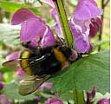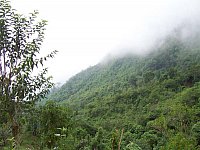Impact of land use on multi-trophic systems
In the last recent decades a dramatic decline in biodiversity is clearly recognisable and important ecosystem functions and services are endangered. Land use seems to be the factor that mostly contributes to diversity decline.

Pollination by animals is an important ecosystem service. Of all flowering plant species approximately 80% depend on pollination by animals, mostly insects. Changing land use patterns, excessive application of pesticides, climate change and invasive species may responsible for pollinator extinction and loss of pollination services. The consequence of this loss is an important threat for human welfare i.e. food supply, pest and disease control and climate regulation.
Tropical rainforests are the ecosystems with the highest biodiversity worldwide and their very existence is under threat by massive deforestation. The dependence of such ecosystems on pollination is even stronger than the global average. In the rainforests of Central America 95% of canopy trees and 50% of subcanopy and understory plants may be pollinated by insects.

This project will focus on the use of multi-trophic systems, especially plant-pollinator-parasite-systems, for assessing the impact of land use on biodiversity. The equilibrium abundances within trophic levels are determined through trophic interactions between and competition within the trophic levels. These interactions and competition are characterized by bottom-up and top down effects in ecological communities.
To date population genetic studies that take the level of pollinating insects and the trophic level of their parasites in concern are rare although population genetics are an appropriate tool for assessing the impact of land use on multi-trophic systems.



